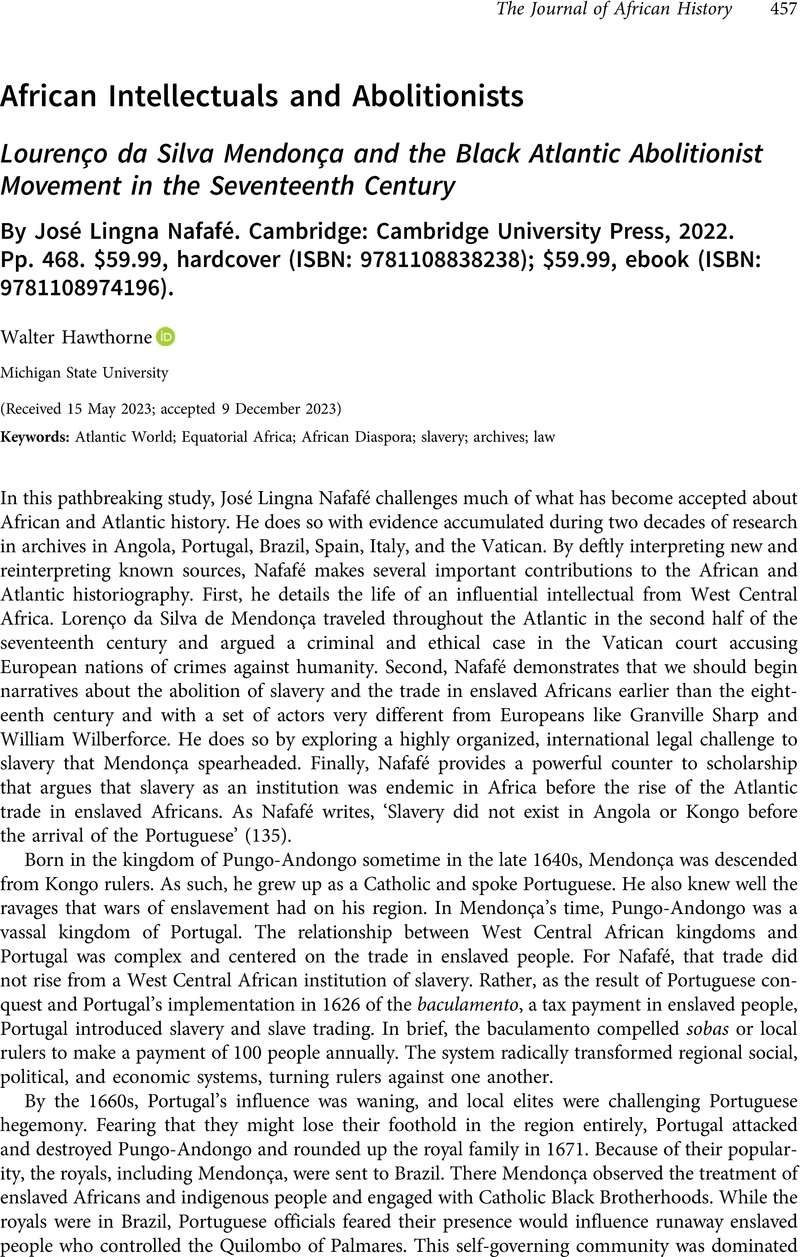No CrossRef data available.
Article contents
African Intellectuals and Abolitionists - Lourenço da Silva Mendonça and the Black Atlantic Abolitionist Movement in the Seventeenth Century By José Lingna Nafafé. Cambridge: Cambridge University Press, 2022. Pp. 468. $59.99, hardcover (ISBN: 9781108838238); $59.99, ebook (ISBN: 9781108974196).
Review products
Lourenço da Silva Mendonça and the Black Atlantic Abolitionist Movement in the Seventeenth Century By José Lingna Nafafé. Cambridge: Cambridge University Press, 2022. Pp. 468. $59.99, hardcover (ISBN: 9781108838238); $59.99, ebook (ISBN: 9781108974196).
Published online by Cambridge University Press: 22 January 2024
Abstract
An abstract is not available for this content so a preview has been provided. Please use the Get access link above for information on how to access this content.

- Type
- Book Review
- Information
- Copyright
- Copyright © The Author(s), 2024. Published by Cambridge University Press.



